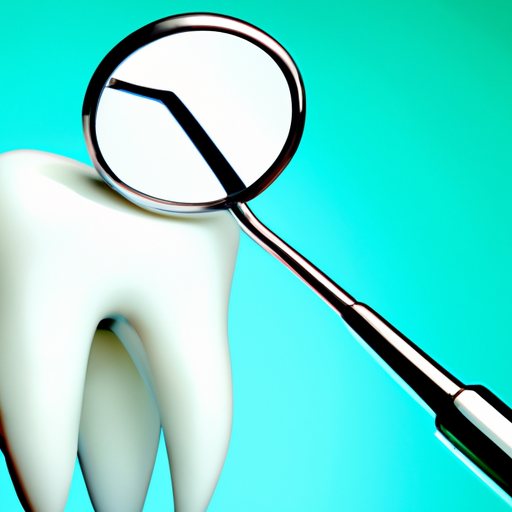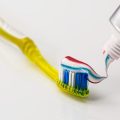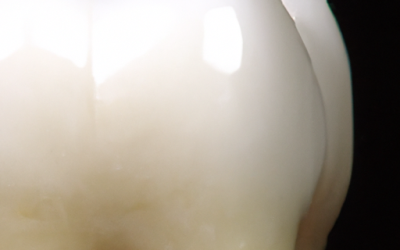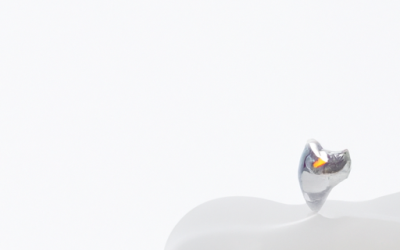If you’ve ever experienced the excruciating pain of a toothache, you know just how unbearable it can be. The good news is that dentists are highly skilled at diagnosing and treating toothaches, providing much-needed relief. From filling cavities to performing root canals or even extracting a tooth, dentists have a range of methods to address the underlying cause and alleviate the pain. In this article, we’ll explore the process that dentists follow to diagnose and treat toothaches, giving you a better understanding of what to expect during your visit to the dentist’s office.
Diagnosing Toothaches
When you experience a toothache, it’s important to consult with a dentist to diagnose the cause and find appropriate treatment options. The process of diagnosing toothaches typically involves a patient consultation, dental examination, dental imaging, and other diagnostic tests.
1.1. Patient Consultation
During a patient consultation, your dentist will ask you about your symptoms, medical history, and any recent trauma or injury to your teeth. It’s important to provide detailed information about your toothache, including the location, intensity, and duration of the pain. This information will help your dentist narrow down the possible causes of your toothache and determine the appropriate diagnostic tests.
1.2. Dental Examination
A dental examination is a crucial step in diagnosing toothaches. Your dentist will visually inspect your teeth, gums, and oral tissues to check for any visible signs of decay, infection, or other dental issues. They will also use dental instruments to gently probe the affected tooth and surrounding areas, looking for signs of tenderness or sensitivity. This examination helps your dentist gather more information and narrow down the potential causes of your toothache.
1.3. Dental Imaging
In some cases, dental imaging may be necessary to diagnose the cause of a toothache. X-rays can provide a detailed view of your teeth, roots, and surrounding bone structure, allowing your dentist to detect abnormalities that may not be visible during a visual examination. Other types of dental imaging, such as CT scans or panoramic X-rays, may also be used to get a better understanding of the underlying dental issues.
1.4. Other Diagnostic Tests
In certain situations, additional diagnostic tests may be needed to accurately diagnose a toothache. These tests may include pulp vitality testing, where the dentist checks the health of the tooth’s pulp, or periodontal probing, which measures the depth of gum pockets to assess the presence of gum disease. These tests help your dentist determine the exact cause of your toothache to provide the most appropriate treatment.
Common Causes of Toothaches
Toothaches can have various causes, ranging from dental decay to sinus infections. Understanding the common causes of toothaches can help you identify potential issues and seek early treatment.
2.1. Tooth Decay
Tooth decay, also known as dental caries or cavities, is one of the most common causes of toothaches. It occurs when plaque bacteria produce acids that erode the tooth enamel, leading to the formation of cavities. The decay can progress deeper into the tooth, causing sensitivity, pain, and even infection. Prompt treatment, such as fillings, is necessary to prevent further damage to the tooth.
2.2. Dental Abscess
A dental abscess occurs when there is a pocket of pus in the tooth or surrounding tissues, usually due to a bacterial infection. It can cause severe toothache, swelling, and visible abscess formation. Dental abscesses require immediate dental treatment to drain the pus and eliminate the infection to alleviate the toothache.
2.3. Gum Disease
Gum disease, also called periodontal disease, can lead to toothaches. It is caused by the build-up of plaque and tartar along the gumline, resulting in inflammation and infection of the gums. As the disease progresses, it can cause gum recession, tooth sensitivity, and eventually tooth loss. Proper oral hygiene, including regular brushing and flossing, along with professional dental cleanings, is crucial in preventing and treating gum disease.
2.4. Teeth Grinding
Teeth grinding, also known as bruxism, can cause toothaches. Grinding or clenching your teeth puts excessive pressure on the teeth, wearing down the enamel and causing tooth sensitivity and pain. Bruxism is often related to stress or an abnormal bite. Dentists may recommend wearing a nightguard or making lifestyle changes to alleviate the toothache caused by teeth grinding.
2.5. Tooth Sensitivity
Tooth sensitivity can lead to toothaches when exposed to hot or cold temperatures, sweets, or acidic foods and drinks. It occurs when the tooth’s protective enamel wears down, exposing the underlying dentin and nerves. Good oral hygiene practices, such as using desensitizing toothpaste and avoiding triggers, can help manage tooth sensitivity.
2.6. Cracked or Fractured Tooth
A cracked or fractured tooth can cause sharp pain when biting or chewing. Cracks or fractures can occur due to trauma, chewing hard foods, or grinding teeth. Treatment options may vary depending on the severity of the crack, ranging from bonding or dental crown placement to root canal treatment or tooth extraction.
2.7. Sinus Infection
A sinus infection can cause toothache-like pain, especially in the upper teeth, due to the close proximity of the sinus cavities to the upper jaw. The pain may be accompanied by other symptoms, such as nasal congestion and facial pressure. Treating the sinus infection usually resolves the toothache symptoms.
2.8. Jaw Joint Disorders
Conditions such as temporomandibular joint (TMJ) disorders can cause toothache-like pain, often associated with jaw joint dysfunction or muscle tightness. These disorders can result from jaw injuries, teeth grinding, poor posture, or stress. Your dentist may recommend a combination of treatments, including lifestyle changes, physical therapy, and dental splints, to alleviate the toothache caused by jaw joint disorders.
2.9. Trauma or Injury
Toothaches can also result from trauma or injury to the teeth or surrounding structures. Accidents or sports injuries can cause fractures, dislodged teeth, or damage to the tooth’s pulp, leading to severe pain. Immediate dental evaluation and treatment are essential to minimize complications and relieve the toothache.
2.10. Orthodontic Issues
Orthodontic issues, such as misaligned teeth or malocclusion, can contribute to toothaches. When the teeth are not properly aligned, they can put undue stress on certain teeth or cause them to rub against each other, resulting in discomfort or pain. Addressing orthodontic issues through braces, aligners, or other orthodontic treatments can alleviate the toothache symptoms.
Toothache Relief
Toothache relief can be achieved through various treatment options, depending on the underlying cause of the toothache. These treatment options can include medications for pain management, dental procedures, or home remedies.
3.1. Medications
Medications can provide temporary toothache relief by reducing pain and inflammation. Over-the-counter pain relievers, such as ibuprofen or acetaminophen, can be effective in managing mild to moderate toothaches. Dentists may also prescribe stronger pain medication or antibiotics if the toothache is caused by an infection. It’s important to follow the recommended dosage and consult with your dentist or healthcare provider before taking any medication.
3.2. Dental Procedures
Dental procedures are often necessary to treat the underlying cause of the toothache and provide long-term relief. The specific procedure will depend on the diagnosis and condition of the affected tooth. Some common dental procedures for toothache relief include:
3.2.1. Filling Cavities
If tooth decay is causing the toothache, your dentist may recommend filling the cavities. The procedure involves removing the decayed material from the tooth and filling the space with a dental filling material, such as composite resin or amalgam. Filling cavities not only relieves the toothache but also prevents further decay and damage.
3.2.2. Root Canal Treatment
When the tooth’s pulp becomes infected or inflamed, a root canal treatment may be necessary to alleviate the toothache and save the tooth. The procedure involves removing the infected or damaged pulp, cleaning and shaping the root canals, and filling them with a biocompatible material. A crown is usually placed on the treated tooth to restore its strength and functionality.
3.2.3. Tooth Extraction
If the tooth is extensively damaged, infected, or cannot be saved, tooth extraction may be recommended. This involves the complete removal of the tooth. After the extraction, your dentist may discuss options for tooth replacement, such as dental implants, bridges, or dentures.
3.2.4. Other Dental Procedures
Depending on the specific diagnosis, other dental procedures may be necessary to address the underlying cause of the toothache. These may include scaling and root planing for gum disease, dental crowns to restore damaged teeth, dental bridges to replace missing teeth, or dental implants for tooth replacement. Orthodontic treatments, such as braces or aligners, may also be recommended to correct misalignments contributing to toothaches.
3.3. Home Remedies
In addition to professional dental treatment, several home remedies can provide temporary relief from toothaches. These remedies can be used alongside medications or dental procedures. Some common home remedies for toothache relief include:
3.3.1. Over-the-Counter Pain Relievers
As mentioned earlier, over-the-counter pain relievers can help manage toothache pain. Follow the recommended dosage and consult with your dentist or healthcare provider before taking any medication.
3.3.2. Saltwater Rinse
Rinsing your mouth with warm saltwater can help reduce toothache pain and inflammation. Dissolve half a teaspoon of salt in eight ounces of warm water and swish it around your mouth for about 30 seconds before spitting it out. Repeat this several times a day as needed.
3.3.3. Cold Compress
Applying a cold compress or ice pack wrapped in a thin cloth to the affected area can numb the pain and reduce swelling. Apply the cold compress for about 15 minutes at a time, several times a day.
3.3.4. Clove Oil
Clove oil has natural numbing properties and can provide temporary relief from toothaches. Soak a cotton ball in clove oil and apply it to the affected tooth or gum area for a few minutes. Alternatively, you can use a whole clove by placing it next to the tooth or gently chewing on it to release the oil.
3.3.5. Avoiding Trigger Foods and Drinks
Some foods and drinks, particularly hot or cold items, sugary or acidic products, and hard or crunchy foods, can worsen toothaches. Avoiding these trigger foods and drinks can help alleviate the pain and sensitivity.
3.3.6. Maintaining Oral Hygiene
Maintaining good oral hygiene practices, such as brushing twice a day with a fluoride toothpaste, flossing daily, and using an antimicrobial mouthwash, can help prevent toothaches and maintain overall oral health. Proper oral hygiene reduces the risk of tooth decay, gum disease, and other dental issues that can lead to toothaches.
Filling Cavities
Cavities are one of the most common causes of toothaches, and filling the cavities is an effective way to relieve the pain and prevent further damage to the tooth.
4.1. Dental Examination
Before starting the cavity filling procedure, your dentist will perform a thorough dental examination. This examination allows them to assess the extent of the decay and determine the appropriate treatment plan. They will visually inspect the affected tooth, use dental instruments to check for any soft spots or sensitivity, and may take X-rays to get a better view of the decayed area.
4.2. Local Anesthesia
To ensure your comfort during the procedure, your dentist will administer local anesthesia to numb the tooth and surrounding tissues. This prevents you from feeling any pain or discomfort during the cavity filling process.
4.3. Removing Decayed Material
Once the tooth is numb, your dentist will use dental instruments, such as a drill or laser, to remove the decayed material from the affected tooth. This process aims to completely remove the decayed area, leaving behind healthy tooth structure.
4.4. Filling the Cavity
After removing the decayed material, your dentist will proceed to fill the cavity with a suitable dental filling material. The choice of filling material may depend on several factors, including the location and size of the cavity, aesthetic preferences, and cost. Common dental filling materials include composite resin, amalgam, gold, or porcelain.
The selected filling material is carefully placed into the cavity and shaped to match the contours of the tooth. Your dentist will ensure that the filling is properly positioned and bonded to the tooth structure.
4.5. Polishing and Adjusting the Filling
Once the cavity is filled, your dentist will polish the filling to smooth out any rough edges and ensure a comfortable fit. They will also check your bite to make sure it is properly aligned. If needed, your dentist may make minor adjustments to the filling to ensure proper occlusion and prevent any discomfort or bite issues.
Filling cavities is an important dental procedure that helps relieve toothache and restore the functionality and appearance of the affected tooth. It is essential to maintain good oral hygiene practices and attend regular dental check-ups to prevent future cavities and ensure the longevity of the filling.
Root Canal Treatment
Root canal treatment, also known as endodontic treatment, is a dental procedure performed to alleviate toothaches caused by infected or damaged tooth pulp. This procedure aims to remove the infected or inflamed pulp, clean and shape the canals, and seal them to prevent further infection.
5.1. Diagnosis and Planning
Before starting the root canal treatment, your dentist will thoroughly examine your tooth and diagnose the need for the procedure. Diagnostic tests, such as X-rays, may be taken to evaluate the extent of pulp damage and the presence of any infection. Based on the diagnosis, your dentist will create a treatment plan that outlines the necessary steps for the root canal procedure.
5.2. Administering Local Anesthesia
To ensure your comfort during the root canal treatment, your dentist will administer local anesthesia to numb the affected tooth and surrounding tissues. This ensures that you do not feel any pain or discomfort throughout the procedure.
5.3. Accessing the Pulp Chamber
Once the tooth is numb, your dentist will create a small access hole in the tooth to gain access to the pulp chamber. This can be done either manually using dental instruments or with the help of a rotary instrument. The access hole allows the dentist to reach the infected or inflamed pulp for removal.
5.4. Cleaning and Shaping the Canals
Using specialized dental instruments called files, your dentist will carefully clean and shape the root canals. This process involves removing the infected or damaged pulp and shaping the canals to ensure proper irrigation and filling. Irrigation with antimicrobial solutions is often performed to disinfect the canals thoroughly.
5.5. Obturation and Sealing
Once the canals are cleaned and shaped, they are filled with a biocompatible material called gutta-percha. Gutta-percha helps seal the canals to prevent re-infection and supports the tooth’s structure. In some cases, a temporary filling material may be used as an initial seal, and the permanent filling or crown is placed in a subsequent dental visit.
View all our emergency dental services
5.6. Restoring the Tooth
After completing the root canal treatment, your dentist will discuss options for restoring the tooth’s structure and functionality. Depending on the condition of the tooth, a dental crown or filling may be recommended. Dental crowns provide added strength and protection to the treated tooth, while fillings may be sufficient for smaller cavities.
Root canal treatment is a highly effective procedure for relieving toothaches caused by infected or damaged tooth pulp. It allows you to save your natural tooth and restore its function and appearance.
Tooth Extraction
In some cases, tooth extraction may be necessary to alleviate toothaches caused by severe decay, infection, trauma, or crowding. Tooth extraction involves the complete removal of the affected tooth from its socket.
6.1. Evaluation and X-rays
Before performing a tooth extraction, your dentist will evaluate the condition of the affected tooth and surrounding tissues. X-rays may be taken to assess the tooth’s position, root structure, and any potential complications.
6.2. Administration of Anesthesia
To ensure your comfort during the tooth extraction, your dentist will administer local anesthesia to numb the tooth and surrounding tissues. In some cases, particularly for complex extractions or multiple extractions, general anesthesia or sedation may be offered.
6.3. Tooth Extraction Procedure
Once the area is numb and you are comfortable, your dentist will proceed with the tooth extraction. Different techniques may be used depending on the tooth’s condition and location, such as simple extraction or surgical extraction.
6.3.1. Simple Extraction
Simple extraction is performed when the tooth is fully visible above the gumline. Your dentist will use an instrument called an elevator to gently loosen the tooth. Once the tooth is sufficiently loosened, dental forceps are used to grasp the tooth and remove it from its socket.
6.3.2. Surgical Extraction
Surgical extraction is necessary for impacted wisdom teeth, severely broken teeth, or teeth with complex root structures. Your dentist or oral surgeon will make an incision in the gum tissue to access the affected tooth. If necessary, a small portion of bone may be removed to facilitate the tooth’s extraction. Once the tooth is extracted, stitches may be placed to aid in healing.
6.4. Post-Extraction Care
After the tooth extraction, your dentist will provide instructions for post-extraction care. This may include:
- Gently biting down on a gauze pad to control bleeding.
- Applying an ice pack or cold compress to reduce swelling.
- Taking over-the-counter pain relievers as prescribed or recommended.
- Eating soft foods and avoiding chewing near the extraction site.
- Avoiding smoking and drinking through a straw to prevent complications.
- Practicing good oral hygiene, such as gentle brushing and rinsing with saltwater.
Following your dentist’s instructions and attending any follow-up appointments is essential for proper healing and to prevent any potential complications.
Other Dental Procedures
In addition to cavity fillings, root canal treatments, and tooth extractions, there are several other dental procedures available that can address various dental issues and contribute to toothache relief.
7.1. Scaling and Root Planing
Scaling and root planing, also known as deep cleaning, is a non-surgical procedure performed to treat gum disease. It involves removing plaque and tartar deposits from above and below the gumline, along with smoothing the root surfaces. This procedure helps eliminate bacteria and toxins, allowing the gums to heal and reduce toothache symptoms.
7.2. Dental Crowns
Dental crowns, also known as caps, are custom-made restorations that cover the entire visible portion of a damaged tooth. They provide strength, protection, and improved aesthetics for teeth that have undergone root canal treatment, have extensive decay, or are structurally compromised. Dental crowns can alleviate toothaches by restoring the tooth’s structure and preventing further damage.
7.3. Dental Bridges
Dental bridges are prosthetic devices used to replace one or more missing teeth. They consist of one or more artificial teeth (pontics) that are anchored by dental crowns on the adjacent teeth. Dental bridges can improve your appearance, restore proper chewing function, and prevent adjacent teeth from shifting, which can cause toothaches and bite problems.
7.4. Dental Implants
Dental implants are considered the gold standard for tooth replacement. They involve surgically placing a titanium implant into the jawbone, on which a dental crown or prosthetic tooth is attached. Dental implants provide a long-term solution for missing teeth, alleviate toothaches, preserve jawbone health, and offer lifelike aesthetics and functionality.
7.5. Orthodontic Treatments
Orthodontic treatments focus on aligning teeth and jaws to improve both aesthetic appearance and overall dental health. Traditional braces, clear aligners, and other orthodontic appliances can address tooth misalignment, crowding, overbites, underbites, and crossbites. By correcting these issues, orthodontic treatments can alleviate toothaches, improve oral hygiene, and prevent further dental complications.
Self-Care and Home Remedies
Alongside professional dental care, self-care practices and home remedies can help alleviate toothaches and promote oral health. These practices can be incorporated into your daily routine and complement dental treatments.
8.1. Over-the-Counter Pain Relievers
Over-the-counter pain relievers, such as ibuprofen or acetaminophen, can provide temporary relief from toothaches. Follow the recommended dosage and consult with your dentist or healthcare provider before taking any medication.
8.2. Saltwater Rinse
A saltwater rinse is an easy and effective home remedy for toothache relief. Dissolve half a teaspoon of salt in eight ounces of warm water and swish it around your mouth for about 30 seconds before spitting it out. This can help reduce pain and inflammation.
8.3. Cold Compress
Applying a cold compress or ice pack wrapped in a thin cloth to the affected area can numb the pain and reduce swelling. Apply the cold compress for about 15 minutes at a time, several times a day.
8.4. Clove Oil
Clove oil has natural numbing properties and can provide temporary relief from toothaches. Soak a cotton ball in clove oil and apply it to the affected tooth or gum area for a few minutes. Alternatively, you can use a whole clove by placing it next to the tooth or gently chewing on it to release the oil.
8.5. Avoiding Trigger Foods and Drinks
Some foods and drinks, particularly hot or cold items, sugary or acidic products, and hard or crunchy foods, can worsen toothaches. Avoiding these trigger foods and drinks can help alleviate the pain and sensitivity.
8.6. Maintaining Oral Hygiene
Maintaining good oral hygiene practices is crucial for toothache relief and overall oral health. Brush your teeth twice a day with a fluoride toothpaste, floss daily, and use an antimicrobial mouthwash to reduce bacteria and plaque. Regular dental check-ups and professional cleanings are also essential to prevent toothaches and detect any dental issues early on.
When to Seek Dental Care
While some toothaches can be managed with home remedies, there are certain situations where it is important to seek dental care promptly. These situations may indicate an underlying dental problem or potential complications that require professional treatment.
9.1. Severe or Prolonged Pain
If you are experiencing severe or prolonged pain that is not alleviated by over-the-counter pain relievers or home remedies, it is important to seek dental care. Severe or persistent toothaches may indicate an infection, abscess, or other dental issues that require professional treatment.
9.2. Swelling or Abscess
The presence of swelling, redness, or a visible abscess in your mouth is a clear indication of an infection. These symptoms should not be ignored, as they can indicate a serious dental problem. Dental care should be sought immediately to prevent the infection from spreading or causing further complications.
9.3. High Fever
If you have a high fever along with a toothache, it may indicate an infection that has spread beyond the tooth. Seek dental care as soon as possible, as the infection may require antibiotics or other treatments to control and eliminate it.
9.4. Difficulty Eating or Opening Mouth
Toothaches that significantly affect your ability to eat or open your mouth properly should be addressed by a dentist. These symptoms may indicate severe decay, an abscess, or other issues that require professional intervention.
9.5. Injured or Knocked-Out Tooth
If you have experienced a dental injury, such as a knocked-out tooth or severe trauma, it is essential to seek immediate dental care. Quick intervention increases the chances of saving the tooth or preventing further damage.
9.6. Chronic Tooth Sensitivity
While occasional tooth sensitivity may not require immediate dental care, chronic or worsening tooth sensitivity should be evaluated by a dentist. It may indicate underlying dental issues, such as enamel erosion or gum recession, that need professional attention.
Prevention of Toothaches
Preventing toothaches is always better than seeking treatment for existing pain. By adopting good oral hygiene practices and making healthy choices, you can reduce the risk of toothaches and maintain optimal dental health.
10.1. Regular Dental Check-ups
Scheduling regular dental check-ups is crucial for preventive care and early detection of dental issues. Dental professionals can identify potential problems early on and provide appropriate treatment to prevent toothaches and more extensive dental procedures later.
10.2. Good Oral Hygiene Practices
Practicing good oral hygiene habits is essential for preventing toothaches. This includes brushing your teeth twice a day with fluoride toothpaste, flossing daily, and using an antimicrobial mouthwash. Proper oral hygiene helps remove plaque, prevent tooth decay and gum disease, and maintain overall oral health.
10.3. Balanced Diet
Maintaining a balanced diet plays a significant role in oral health. Limiting sugary and acidic foods and drinks can help prevent tooth decay. Choose a diet rich in fruits, vegetables, lean proteins, and dairy products to provide essential nutrients for strong teeth and gums.
10.4. Avoiding Teeth Grinding
Teeth grinding, also known as bruxism, can contribute to toothaches and other dental issues. If you grind your teeth, particularly during sleep, consider using a mouthguard or splint to protect your teeth. Stress management techniques and lifestyle changes can also help reduce teeth grinding.
10.5. Using Mouthguards for Sports
Engaging in sports or physical activities that pose a risk of dental injuries requires the use of mouthguards. Mouthguards provide protection against tooth fractures, dislodgements, and other injuries that can cause toothaches. Consult with your dentist to get a custom-fitted mouthguard for optimal protection.
By following these preventive measures and seeking regular dental care, you can reduce the chance of experiencing toothaches and maintain a healthy smile. Remember, early intervention and prompt dental care are crucial for preventing complications and achieving optimal oral health.











